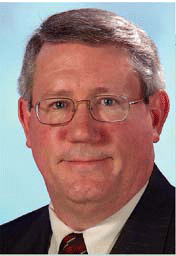America’s health care safety net may be full of holes, but its doctors and hospitals are generously pitching in with charity care to fill some tears in that net. As debate rages over competing state and federal proposals to cover 45 million Americans who lack health insurance, the private sector quietly continues to contribute billions of dollars toward medical care. According to Health Affairs magazine and adjusted for inflation, hospitals, clinics, and physicians contributed $27.6 billion, $8.3 billion, and $7.1 billion, respectively, in uncompensated care in 2006. Add to that the funds and expertise contributed by private foundations and you have a major weapon in the battle to provide medical care to the needy.
Explore This Issue
July 2007Physicians Care
A 2006 analysis of how private health care providers care for the uninsured, funded by the W.K. Kellogg Foundation, called private physicians the invisible giant of the nation’s safety net. The report detailed that whereas 10.6% of charity care is delivered at community health centers and 11.5% in hospitals, physicians give 77.9% of all charity care in their offices. It also noted that physicians tend to keep a low profile about this work, fearing being overwhelmed by needy patients and the health care activists, who favor public sector solutions, and worry that greater visibility and support for volunteer care by private physicians may undercut support for expanded insurance coverage. (Volunteer Health Care Programs: A Report to the W.K. Kellogg Foundation by Isaacs-Jellinek, March 2006, p. 4.)
Physicians have long provided charity care to patients at offices; however, from 1997 to today, the percentage of physicians who do so has dropped from 75% to 66%, according to the Center for Studying Health Systems Change. As public and private payers have tightly controlled reimbursements, financial pressures on physicians may be limiting their ability to provide charity care. Although AMA President J. Edward Hill, MD, says that charity care isn’t the solution to the problem of the uninsured, he sees physicians finding creative and efficient ways to provide such care.
Physicians and the communities they serve have gotten more sophisticated about providing charity care. Information technology connecting patients to doctors, particularly specialists, willing to provide charity care is helping nationally. Groups such as the Asheville, NC-based American Project Access Network (APAN) have replicated models developed locally to link patients and physicians in 20 communities nationally. The model involves finding community physician champions and getting them to network with other primary care physicians and specialists willing to care for indigent patients, Using APAN’s blueprint, they document the amount of care given and build an infrastructure for ongoing care. Another organization, the National Association of Free Clinics, networks clinicians nationally to raise more than $300 million annually from private sources to provide $3 billion in health care services to 4.5 million uninsured people.

Leave a Reply